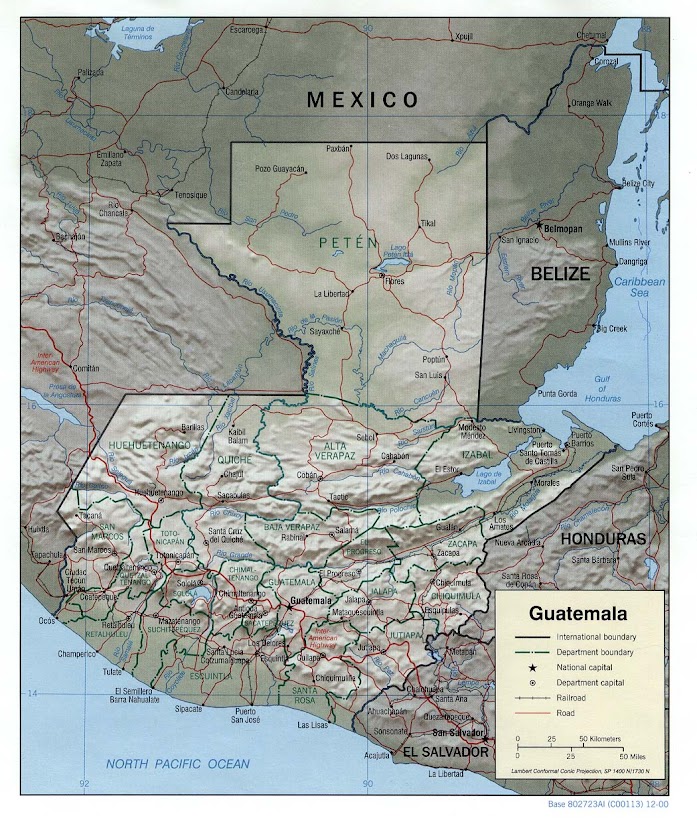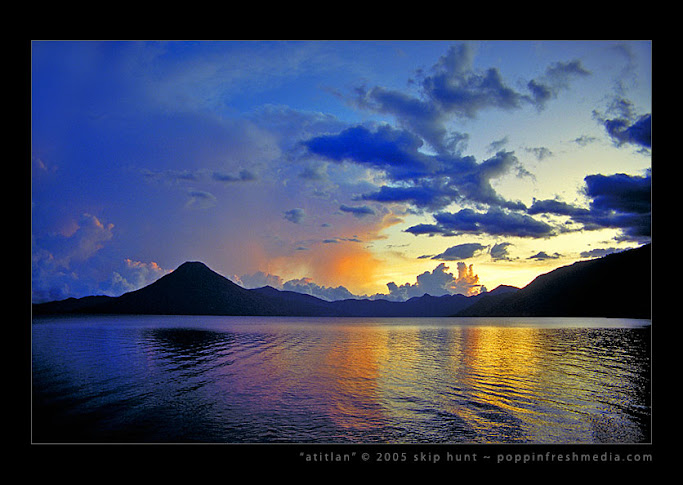The two countries are ready to develop political and economic ties, military technical co-operation, and encouraging and protecting investment. The relevant legal agreements are being prepared.
According to Medvedev, the trade and economic ties between Moscow and Guatemala “have been growing over these last years, but still fall far short of their real potential.”
“We need to reflect on big projects that we could launch together, and on diversifying our trade with new fields of c-ooperation,” the president said. “Tourism is an important sphere for developing our relations, and so are education and other areas.”
Colom, who described Russia as
“an international security guarantor,” considers his trip
“as marking the start of important ties with our region.” “There is an enormous interest in Russia in Latin America, and I think it's time to stimulate it and take advantage of it,” the Guatemalan president said in
an interview with RT.
The political dialogue between the two countries has noticeably stepped up after a session of the international Olympic Committee in 2007, at which the Russian city of Sochi won the right to host the Winter Olympics in 2014, Kommersant daily said. Then, the first meeting of the presidents took place and recently, Russian Foreign Minister Sergey Lavrov visited the country.
The main outcome of the talks in the Kremlin was the joint statement signed by the presidents, the paper said. The two leaders stressed the interest in boosting bilateral trade and economic ties and instructed officials to complete in the near future the preparation of the agreement on visa-free travels.
Prior to the Colom’s visit Guatemala’s Vice President Rafael Espada spoke about his country’s interest to acquire Russian arms in exchange for foodstuffs, the daily said. “We are interested in planes, armored personnel carriers, other equipment to fight organized crime,” he was quoted as saying.
Guatemala could pay for the arms with sugar and coffee, the paper noted. It is not ruled out that these topics were also discussed during President Colom’s visit to Russia, it added.
Commenting on the first official visit of a Guatemalan leader to Moscow, Rossiyskaya Gazeta daily also mentioned “the bonds of Sochi.” However, since the IOC session in 2007, the trade between Russia and Guatemala “has not been balanced,” the paper said.
For 30 years, the trade has been conducted through companies of third-party countries, with Russia exporting mainly fertilizers and paper and importing tobacco, coffee and fruits, the daily noted. Now Guatemala is interested in machinery and Russia’s participation in constructing a road to link the country’s ports.
The agreement on the cooperation between Russia’s Diplomatic Academy and Guatemala’s Foreign Ministry was signed during the visit. Russia is also ready to allocate more grants for students from Guatemala.
Although the presidents signed only two formal documents, “they described the meeting as historic,” Novye Izvestia daily said. The two countries are finding new directions of co-operation, with Guatemala being interested in Russia’s investments.
Guatemala also wants to attract Russian tourists, and visa-free travel to that country, as well as to Honduras, Nicaragua and Salvador, will make this task easier, the paper said.
According to another daily, Vremya Novostey, “Russia will get visa-free travel with Guatemala earlier than with the European Union.”However, the paper doubts that this fact, and that “the Maya pyramid at Tikal” will attract a mass flow of Russian tourists to Guatemala in the near future.
So far there have been few areas of the cooperation between the two countries, the daily said. It also highlighted the fact that Medvedev and Colom did not sign “a package of bilateral agreements” as is usually done during other state visits to Russia.
However, the presidents stressed the need to facilitate exchanges and contacts, including those between public associations and cultural and sports figures from Guatemala City and Sochi, the paper said. It does not matter that Colom became the president after Sochi was awarded the 2014 Olympics.
Analysts believe it will depend on the two governments' interest if the new areas of cooperation will be found. This time, they agreed to unite their efforts in combating drug trafficking, transnational organized crime and international terrorism through the UN and other international and regional organizations.
This agreement with Guatemalan colleagues is partly explained by altruism, Russian Federal Drug Control Service chief Viktor Ivanov told Gazeta daily. According to Ivanov, Moscow is ready to teach drug policemen from Guatemala in Russian training centers.
Also, liaison officers may be deployed in the both countries for the exchange of operative information between Russian and Guatemalan special services, Ivanov said. “The traffic is going via Guatemala primarily to the United States and Western Europe, but it has already begun to reach Russia, even if small,” he explained.
Until a big group of Russian politicians and sports figures, led by then-President Vladimir Putin, who lobbied for the Olympics in Sochi, landed in Guatemala, this country was terra incognita for many Russians, Polit.ru website said.
However, the public then learned that this republic is “a cradle of ancient civilization,” and its government is ready to diversify its economic and political ties, which previously were unilateral, the website added.
If the cooperation develops, Russians will not remember Guatemala only as the country where Sochi became the host of the 2014 Olympics, even if it will become a friendly city of the Guatemalan capital soon. As for Colom, he will fulfill his dream visiting St. Petersburg on March 23.
 Guatemala - The green Gold of Guatemala is Cardamom. 23,000 tones of cardamom are cultivated in Guatemala annually.
Guatemala - The green Gold of Guatemala is Cardamom. 23,000 tones of cardamom are cultivated in Guatemala annually. Cardamom is originally from the south of India it was introduced in Guatemala in 1914 by German plantation owner Oscar Majus in the department of Alta Vearapaz.
Cardamom is originally from the south of India it was introduced in Guatemala in 1914 by German plantation owner Oscar Majus in the department of Alta Vearapaz.








